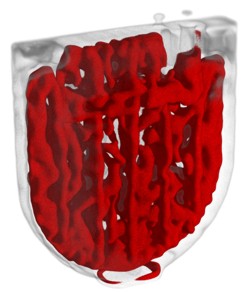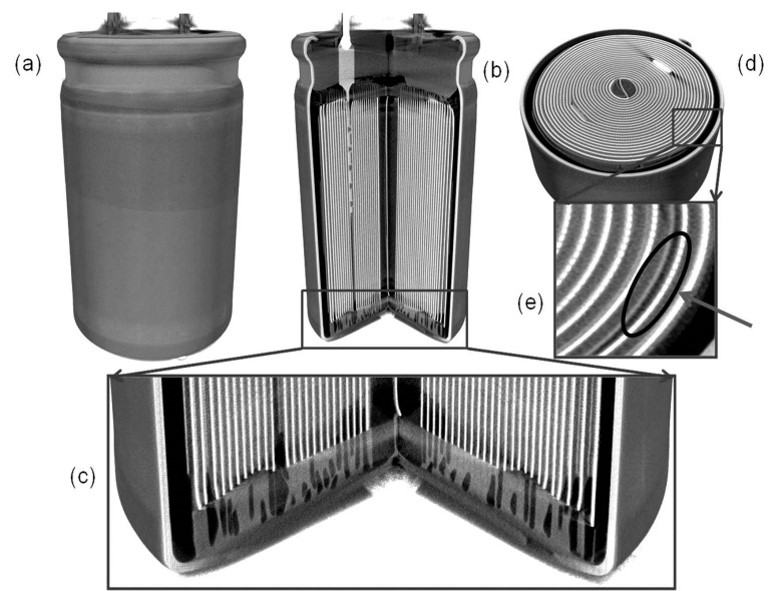Tomography
Tomography of batteries using neutrons and X-rays
A complete, three-dimensional image of the entire internal structure is obtained by radiographing the object to be examined from different directions and then combining these data into a three-dimensional data set (i.e. tomography). The result is a spatial image in the virtual space, which can be disassembled at any place at will, cut up or examined for structural or chemical changes. Again, X-rays and neutrons are used. Both types of radiation behave in a way complementary to each other, as they reflect different properties of the materials studied. Thus, with neutron radiation, material contrasts are visible that are not to be found with synchrotron radiation and vice versa.


